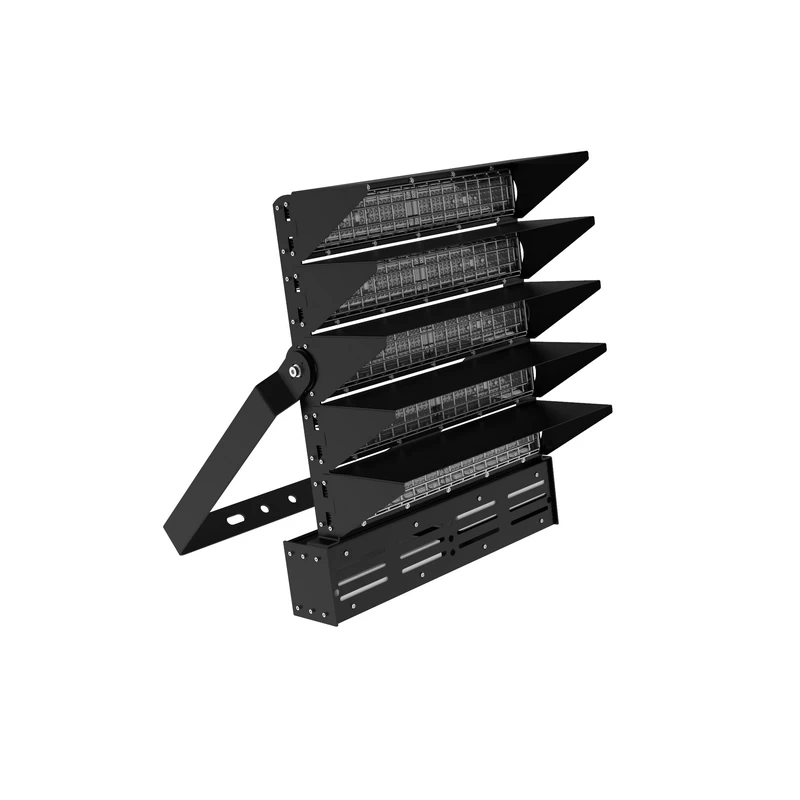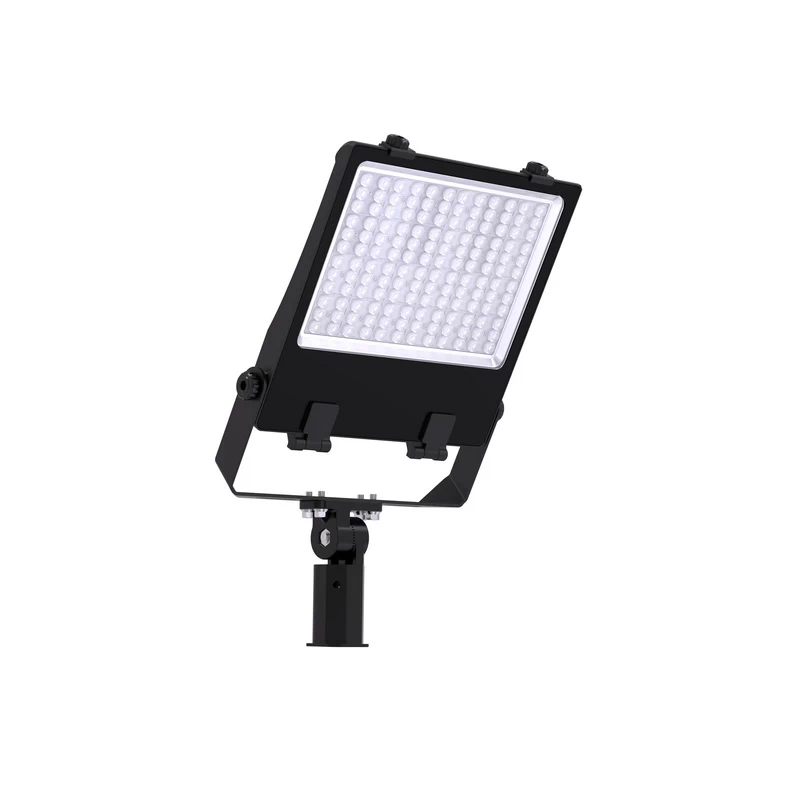Table of Contents
ToggleIntroduction
Professional stadiums and ball sports fields all have appropriate lighting standards. Bright, even light ensures athlete safety, spectator enjoyment, and high-definition television broadcasts. Let’s discuss the different lighting standards for different sports.
Key parameters of stadium lighting standards
Different stadiums or sports fields lighting standards are mainly reflected in several core parameters. From entertainment-level to competition-level venues, there are different lighting parameter standards to provide the best sports experience.
In sports lighting standards, the core difference lies in lux levels. Standards for other parameters do not vary as much across different scenarios and are usually based on a minimum standard. View information about lux or more lighting units.

Sports field lighting lux levels
Lux levels is the most basic and intuitive difference in stadium lighting, which directly determines the brightness of the venue.
- Training ground: Minimum (150–300 lux), sufficient for players to see clearly
- Amateur/Recreational match: Medium (300–500 lux)
- Professional competition: Higher (500–1000 lux)
- HD/TV broadcasting: Highest (1000–2000 lux or higher)
Glare Control (GR/UGR)
For recreational or training venues, the glare index is slightly more relaxed (≤55), as long as it does not produce noticeably uncomfortable glare. For competition venues, the glare index is higher, typically ≤50. Venues rated for television broadcasts have the lowest glare index because it affects camera performance.
Color Rendering Index (CRI)
A standard CRI of 70 or higher is sufficient for general entertainment venue lighting, but competition-grade lighting requires 80 or higher. High-definition broadcasts require a CRI of 90 or higher to ensure faithful color reproduction.
Uniformity
The lighting uniformity standards for recreational or training sports fields are more relaxed, allowing for some variations in brightness within the field. A standard of 0.5 or higher is generally sufficient. Competition-level lighting requires consistent light distribution throughout the field, with a uniformity of 0.7 or higher. Television broadcast-level lighting sometimes requires a uniformity of 0.8 or higher.
Color Temperature (CCT)
Most stadium and sports field lighting standards recommend a range of 4000K–5700K. High-definition broadcasts prefer cool white light (5000–5700K) for clearer images.
| Parameter | Training / Recreational | Amateur Competition | Professional Competition | HDTV / Broadcast Level |
|---|---|---|---|---|
| Illuminance (lux) | 150–300 | 300–500 | 500–1000 | 1000–2000+ |
| Glare Control (GR / UGR) | ≤ 55 | ≤ 50 | ≤ 50 | ≤ 50 |
| Color Rendering Index (CRI, Ra) | ≥ 70 | ≥ 80 | ≥ 80 | ≥ 90 |
| Uniformity (Emin/Avg) | ≥ 0.5 | ≥ 0.6 | ≥ 0.7 | ≥ 0.7–0.8 |
| Color Temperature (CCT) | 4000K–5700K | 4000K–5700K | 4000K–5700K | 5000K–5700K |
Lighting Standards for Different Sports Fields
Sports field lighting standards also vary because they include football, tennis, basketball, pickleball courts, etc. The size and speed of the ball as well as the size and space of the field will affect the lighting experience.
We are a professional LED lighting manufacturer with extensive experience in field of sports lighting. You can view all our products or contact us to recommend suitable LED lights for you.
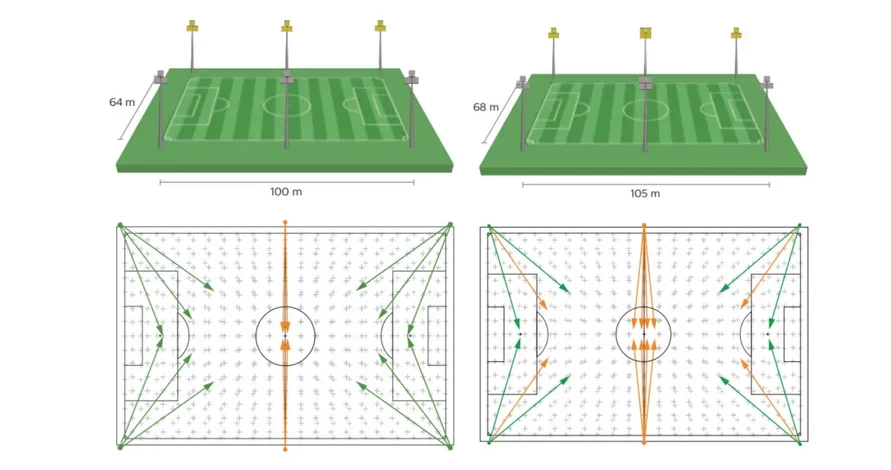
| Sports Field | Core Features | Lighting Key Points (Broadcast) | Lux Levels |
|---|---|---|---|
| Football | Very large field, fast pace, long passes and shots | High horizontal & vertical illuminance CRI > 90, strict glare control | Horizontal: 500–1500+ lux Vertical: ≥ 1400–2000 lux |
| Tennis | Fast small ball, high trajectory | Strong vertical illuminance no shadows, strict glare control | Horizontal: 750–1000+ lux Vertical (1.5m): ≥ 750 lux |
| Basketball | Fast pace, frequent movement | High vertical illuminance, high uniformity | Horizontal: 500–1000+ lux Vertical: ≥ 1000 lux |
| Badminton | Fastest small ball, very high flight | Higher than tennis, strong glare control | Horizontal: 750–1000+ lux Vertical: ≥ 750 lux |
| Pickleball | Small court, medium speed, similar to tennis | Focus on uniformity and glare control | Amateur: 300–500 lux Pro: 500–750 lux |
LED advantages for stadiums lighting
LED lighting has undoubtedly become the mainstream and standard choice for sports field lighting worldwide. Whether it is newly built large-scale professional stadiums or renovated community stadiums, modern LED technology has completely replaced traditional lighting due to its huge advantages.
- Energy Saving:
LEDs offer an extremely high luminous efficacy (lm/W), reducing energy consumption by 50% to 70%. - Light Control:
LED lights feature customizable beam angles, significantly reducing glare and light spillage. - Instant-On:
LEDs illuminate instantly and restart immediately after a power outage, without delay. - Long Life:
LED lights offer a lifespan of 50,000 to 100,000 hours, meaning they can last for years without requiring replacement. - Environmentally Friendly:
They contain no harmful substances, such as mercury, making them more environmentally friendly.
The advantages of LED are far more than these, so LED is easier to meet sports lighting standards.
Recommended stadium lighting fixtures
There are differences in lamps used indoors or outdoors. I will recommend you our professionally manufactured LED lights for sports lighting, which can meet various lux levels needs. Some of the lights have been uploaded to the product list on ledrhythm.com. For complete LED lighting solutions, please contact us or visit our professional sports website “abuslighting.com“
Indoor sports field lighting generally uses LED linear lights or professionally designed lighting fixtures. For example:
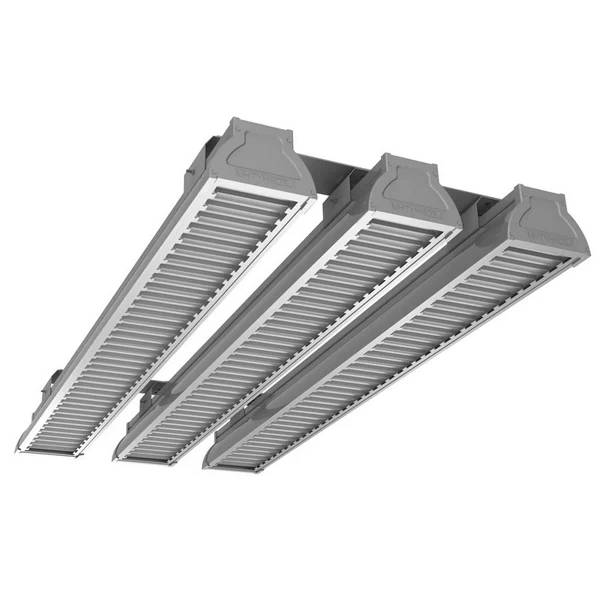
Industrial and Sports LED Linear Lighting

"SKY" - Indoor Stadium LED Light

"Hermes" - LED Light for Indoor Courts
Outdoor or large football fields lighting use high poles, floodlights, modular LED lighting. For example:
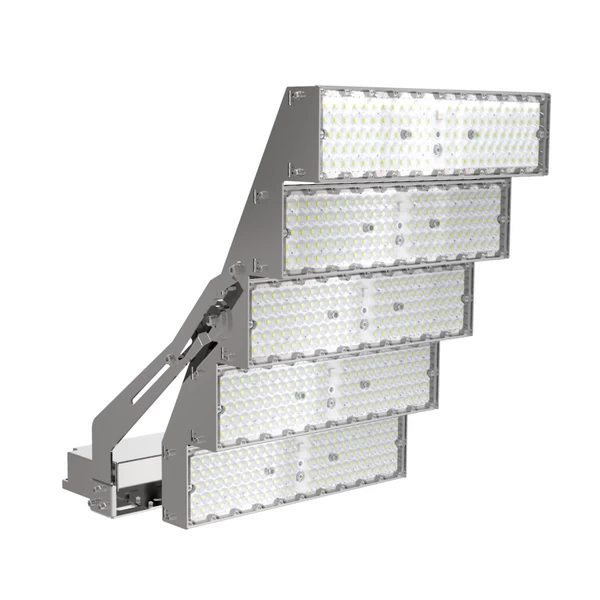
Modular LED Flood Light
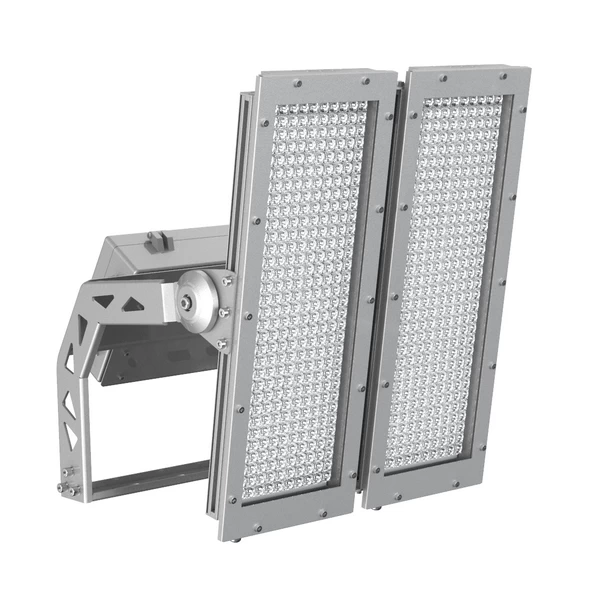
Low Glare LED Flood Light



